Is a £100 stand mixer ever any good? Our experts test the budget alternative to KitchenAid
It looks the part, doesn't it?
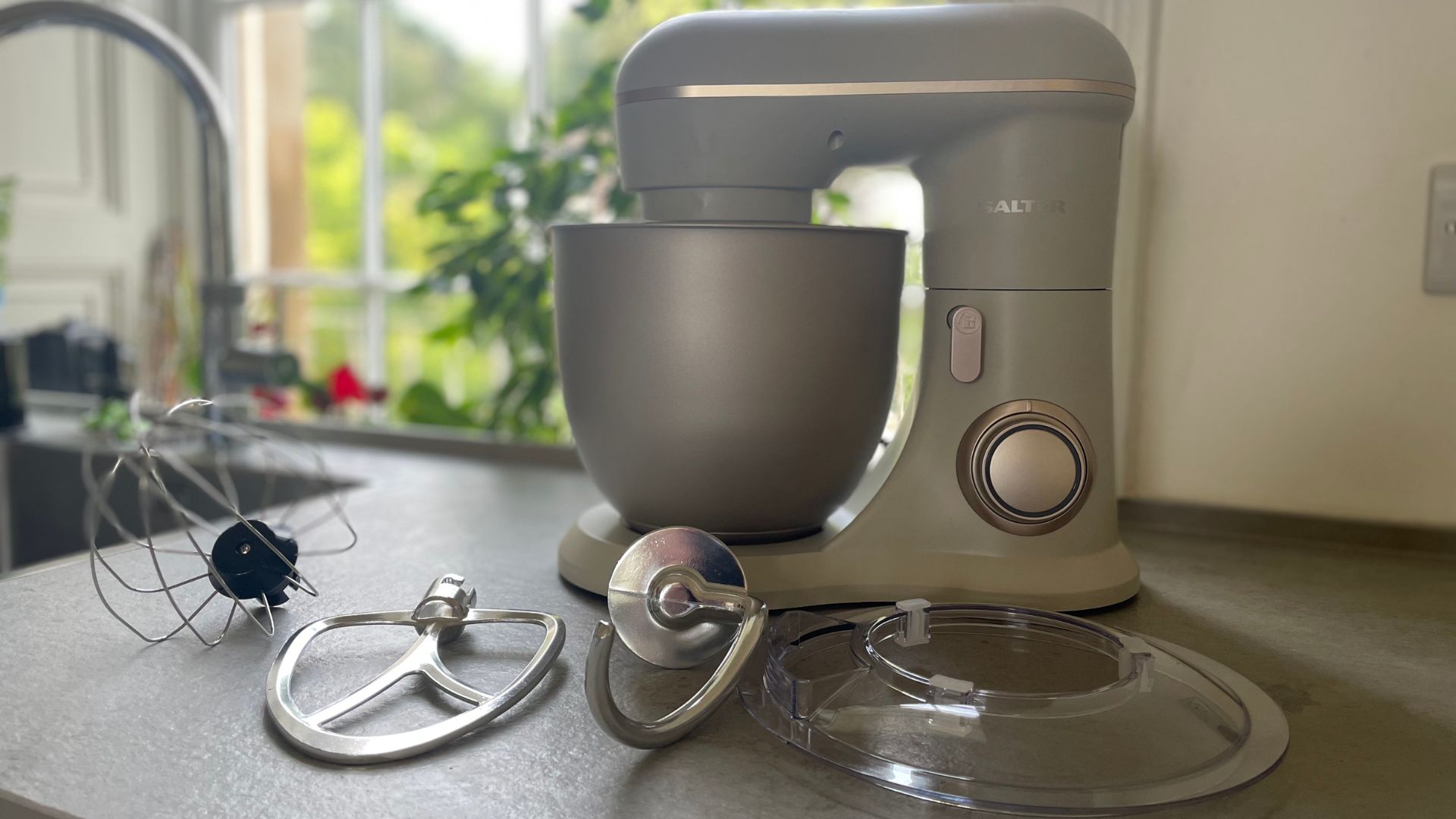
On the counter, the Salter looks impressive and it’s a powerhouse when it comes to whipping, kneading, and mixing. Of course, it’s a little thinner and lighter in places, but as a budget-friendly alternative to more expensive models, Salter is incredibly attractive.
-
+
Incredible value
-
+
Light and easy to move around
-
+
Looks impressive on the counter
-
+
Performs well across the tasks
-
-
Doesn't mix right to the bottom
-
-
Isn't as robust as more premium models
-
-
Not dishwasher safe
Why you can trust Woman & Home

The Salter Bakes Stand Mixer is just £100, but it looks like it should cost a lot more. I wanted to find out if this is more than just a pretty face.
Whilst plenty of us covet a KitchenAid, not everyone has the £500 budget to invest in one. I’ve had lots of people asking 'are cheap stand mixers worth it?', so I thought I’d take a chance to explore the more budget-friendly stand mixer options. That’s when I came across Salter’s Stand Mixer.
I've put this through exactly the same tests that the best stand mixers on the market have, including the likes of KitchenAid and Kenwood stand mixers. The Salter has been mixing, whipping, and kneading on my counter for months. It's an impressive contender, especially considering the price tag. Here's everything you need to know.
Specifications
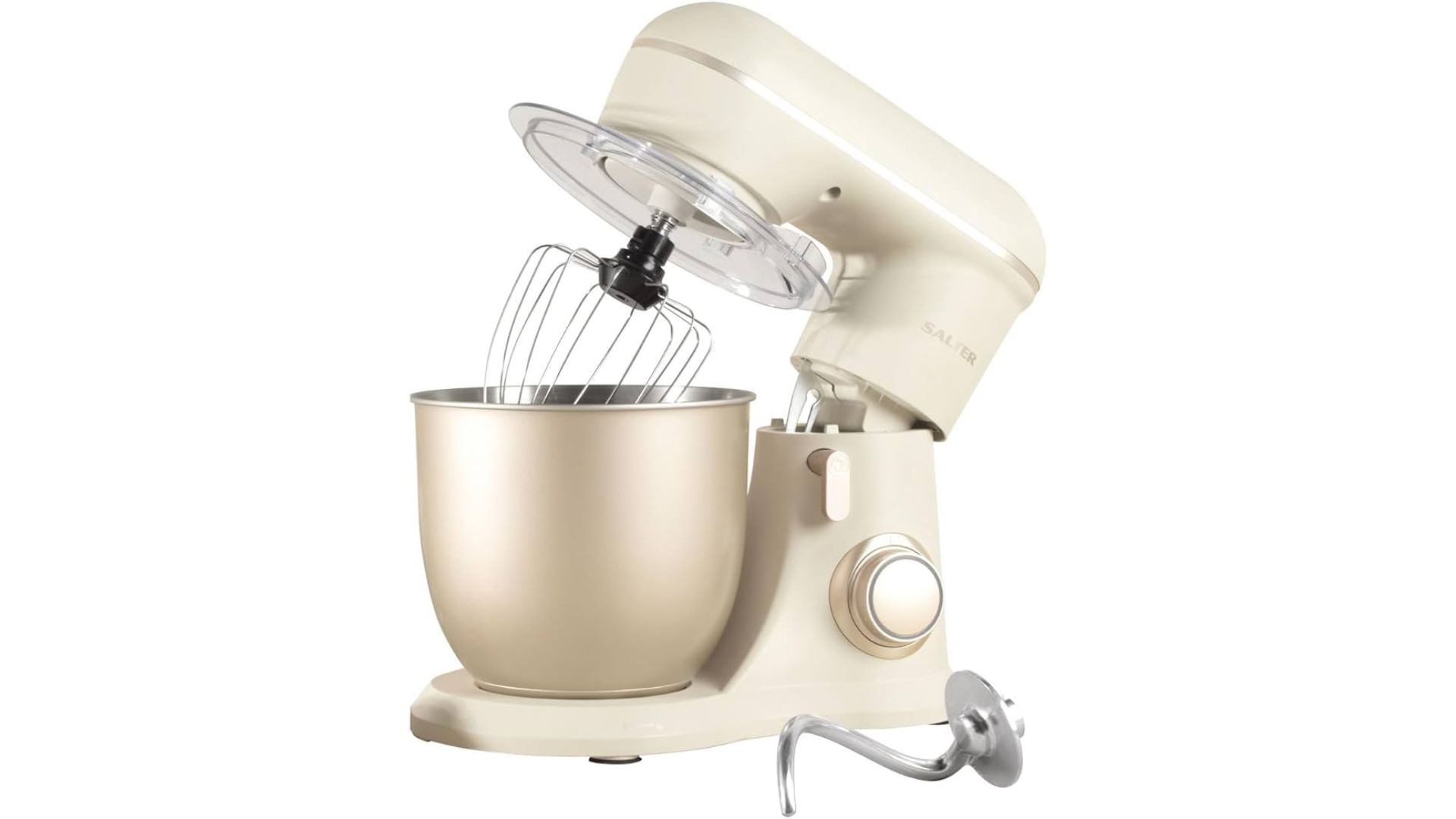
| Dimensions | 35.2D x 22W x 33H cm |
| Weight | 4.65 kgs |
| Bowl size | 4L |
| Materials | Stainless steel, plastic |
| Power | 1300W |
| Speed settings | 10 |
| Attachments | Whisk, beater, dough hook |
Unboxing

Rather surprisingly, Salter specialises in eco-friendly packaging. Normally, cheaper brands throw plastic and polystyrene at their stand mixers in the hopes that they’ll stay in good shape. All of the Salter arrived in pristine condition and the packaging could all go straight into the recycling afterwards.
The Salter comes with a classic array of attachments: a whisk, a dough hook, and a mixer. I tested the Salter in a sleek grey finish and it looked great on the counter. It’s much lighter than every other stand mixer that I’ve tested, but this is fitted with grippy feet that keep it in place, which negates a lot of the potential issues that could come up when using a lighter stand mixer.
Who would it suit?
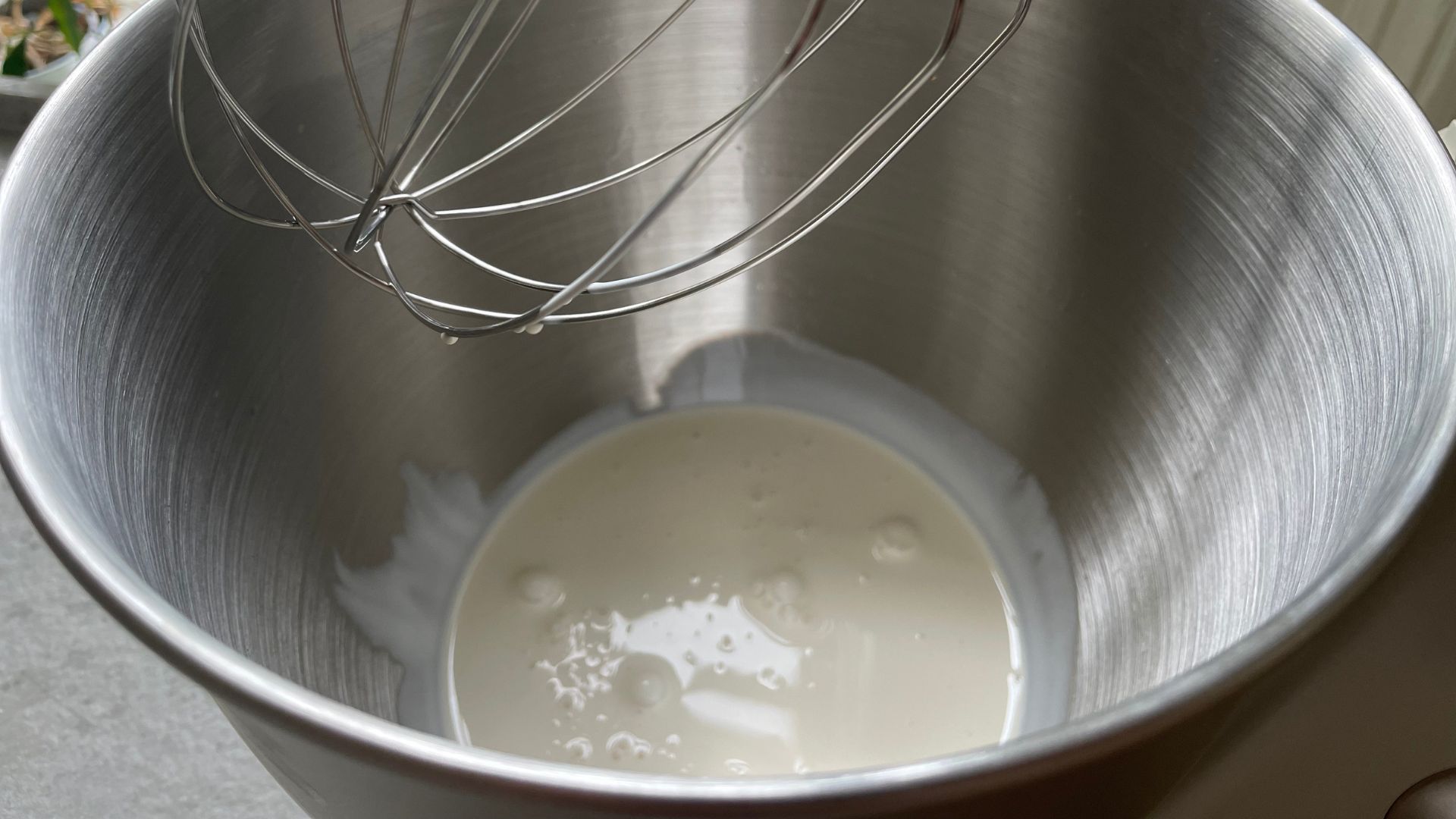
This is a brilliant budget stand mixer. For the price, you get all the features and performance of the best models on the market, pocketing another £300 to spend on some special baking ingredients, I hope. At this pricepoint, it’s definitely appealing to beginners who might not be after a hand folding speed setting or extra special power. You wouldn’t miss these on your daily or weekly cookbook bakes, but as you develop your skills, you might want to look into the likes of KitchenAid and Kenwood.
A secondary effect of Salter using cheaper materials to make the stand mixer means that it’s feather-light. Whilst the weight does feel a little cheap, I think this benefits a lot of people. If you don’t like weighty appliances on your counter, because they’re hard to move around and a strain on your wrist, this is perfect.
The 4 litre capacity bowl covers the needs of both smaller single-person bakes and cakes that can feed the whole (including extended, long-lost) family.
What is it like to use?
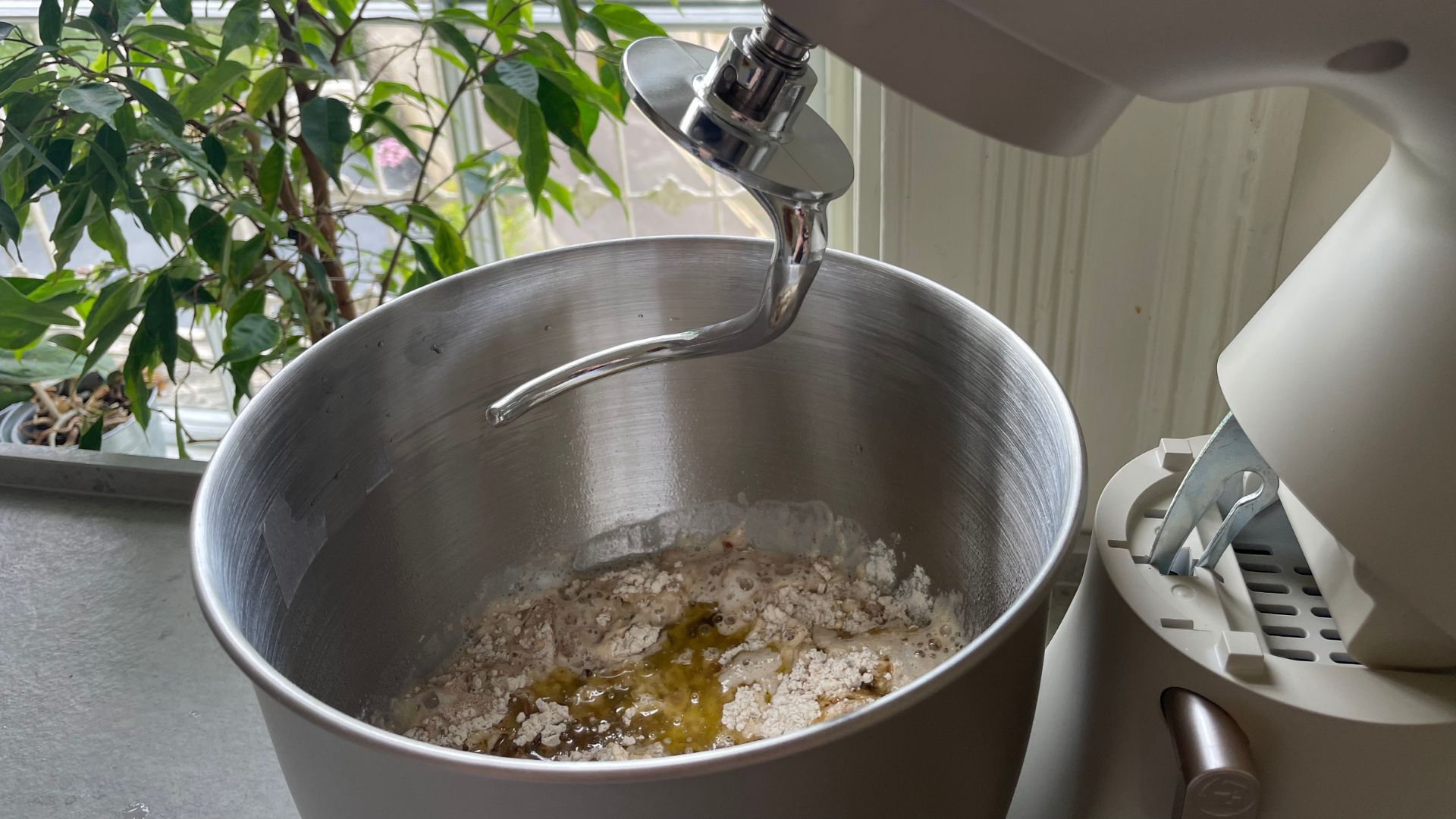
After giving the Salter Stand Mixer’s bowl a wipe down and rinse, I set it in its place on the base. The bowl twists in to secure itself and all the attachments push into the tilt-back head easily and securely. I expected the tilted head to crash backwards, but its on a spring and lock mechanism that keeps all movements slow and secure, which is probably (definitely) how baking should be, as long as I’m not in the kitchen with you.
After testing this formally, I actually kept it out and on my counter for a few months, so it’s been through a lot more than our standard series of tests. I’ll scatter in the extra details when I’m talking about each attachment, but the main things that I’m talking about are: how well this makes cake batter, whether this can make a good bread dough, and what this is like whipping cream.
Test 1: cake mix
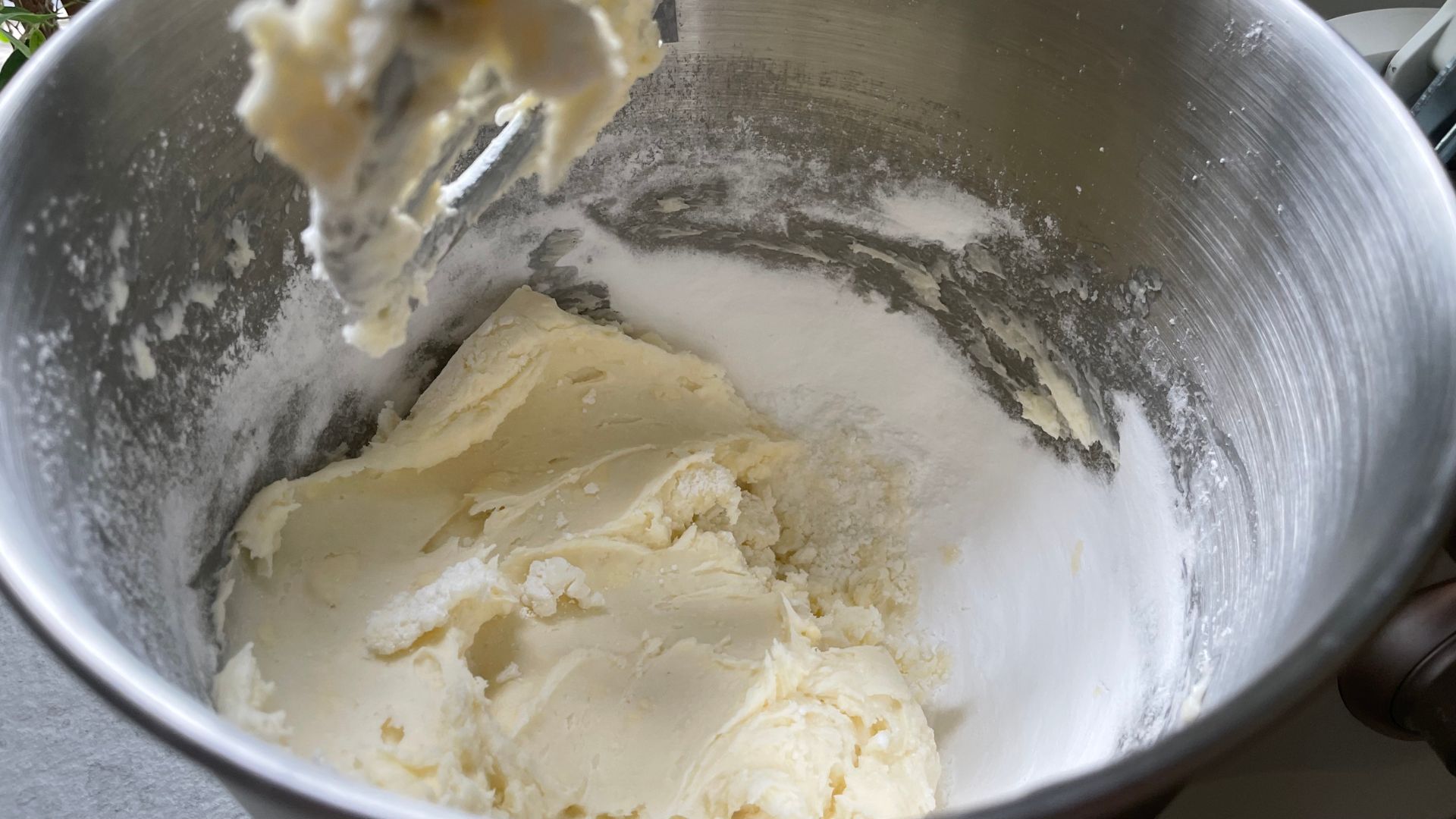
I've always put cakes and stand mixers in the same bracket. I don’t know if that’s because of Bake Off, my Grandma, or just the fact that they make baking big cakes all so easy. Whatever the reason, I always make a cake in a stand mixer before anything else. This way, you’ll be able to tell how good the mixer is at creaming sugar and butter (both quite solid ingredients) as well as how effectively this can incorporate drier ingredients into the mix too
I opted for a classic vanilla sponge and started with some butter and caster sugar. You can see that the Salter did a great job of creating a light and fluffy mix. The sugar was evenly and thoroughly creamed. The motor was quite loud (I recorded 91 dB at points), but with the cost savings you make opting for this, you could buy a pair of noise-cancelling headphones.
When I added the eggs and flour, I popped the guard on. It makes for less attractive photos, but does a really effective job of keeping all of the flour inside the mixing bowl (and not all over the surfaces). I had spotted that some of the sugar didn’t get fully creamed (I intervened with the spatula) and the same applied with the flour. The very bottom as well as the edges of the stand mixer bowl will need you to do a quick, manual swoop around to make sure that the beater picks everything up.
Overall, the proof was very much in the pudding with this. My vanilla sponge was, perfect, if I say so myself. It was light, fluffy, moist, and delicious. I’ve since made muffins (with higher liquid contents), fruit cakes, coffee cakes, cookie doughs, pastries (and just about every other sweet treat you could think of - I have a baking problem, okay?) and the results have always been similar. Even with wetter batters, this still needs a hand scooping dry ingredients up off from around the bowl.
Test 2: bread dough
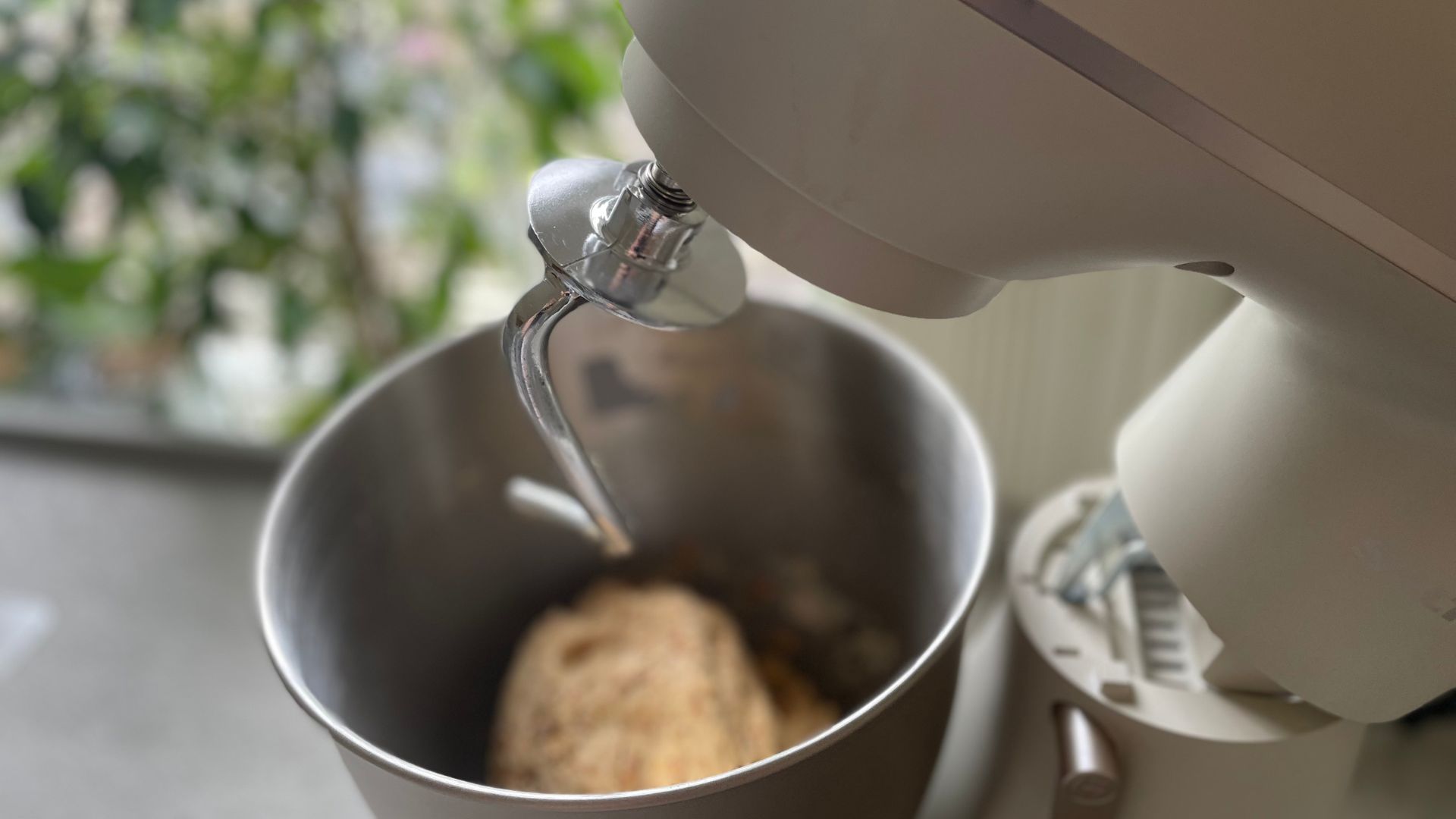
The second test that the Salter went through is making bread. I used a standard recipe for brown bread, with country grain flour, salt, yeast, oil, and water. It looked like the mixture was quite wet, so I wasn’t sure whether this would stick or cling to the dough hook. In fact, this was brilliant. I left the Salter (noisily) whirring away on the counter for a few minutes. When I came back, I could see the dough working into a nice, smooth ball. It did cling to the hook and that stuck quite far up too, so I scraped it all off, gathered up the flour from around the base of the bowl, and set it running again. After a few minutes, the dough had worked itself together wonderfully. I pulled the ball out and gave it a knead by hand to get a sense of the elasticity: this felt soft, smooth, and springy: the perfect dough.
If you want the full story, I left it to rise (and the dough ballooned) and then baked it into a beautifully light, open loaf. The crumb was simply beautiful. I tried making brioche and rucher doughs at home and this still did a good job. You need to keep an eye on the dough hook, because the mix will stick, but as long as you scrap it off a few times throughout the test, this shouldn’t pose an issue.
Test 3: whipped cream
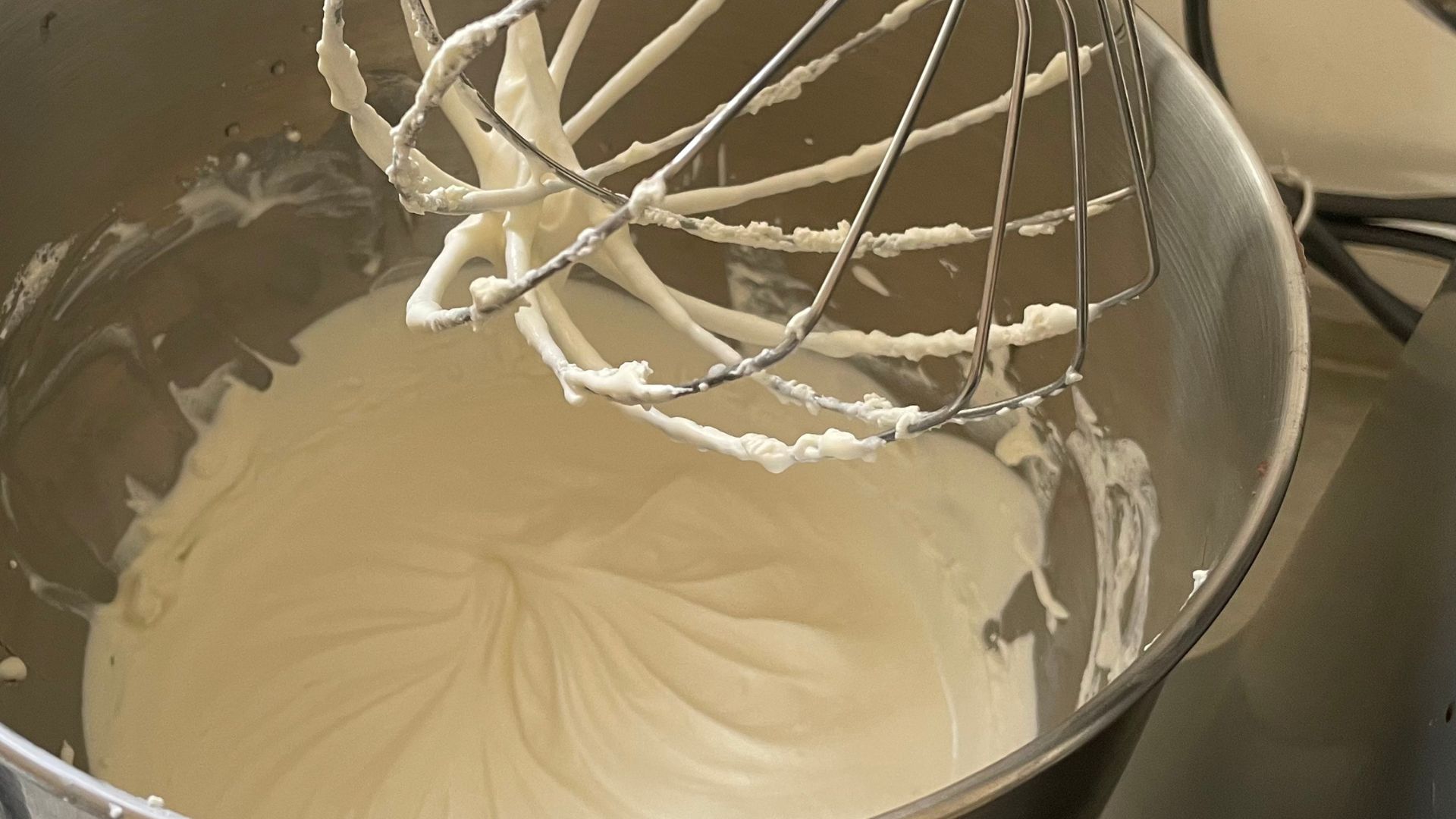
The light whisk is easy to attach, but I wasn’t sure how this would perform on my tests for whipping cream if it couldn’t cover all the bowl. I added 500ml of cream to the bowl and left it running. This definitely takes longer than other stand mixers. I’ve whipped cream to thick, stiff peaks in less than five minutes, but this needed nearly eight. The results were good still: the cream looked smooth and thick, it wasn’t bubbly and it was smooth to taste. I’ve also tried vegan cream, whipping egg whites, and whipping aquafaba with great success. If you’re willing to pour a cuppa and keep yourself busy, this is a great helping hand.
Cleaning
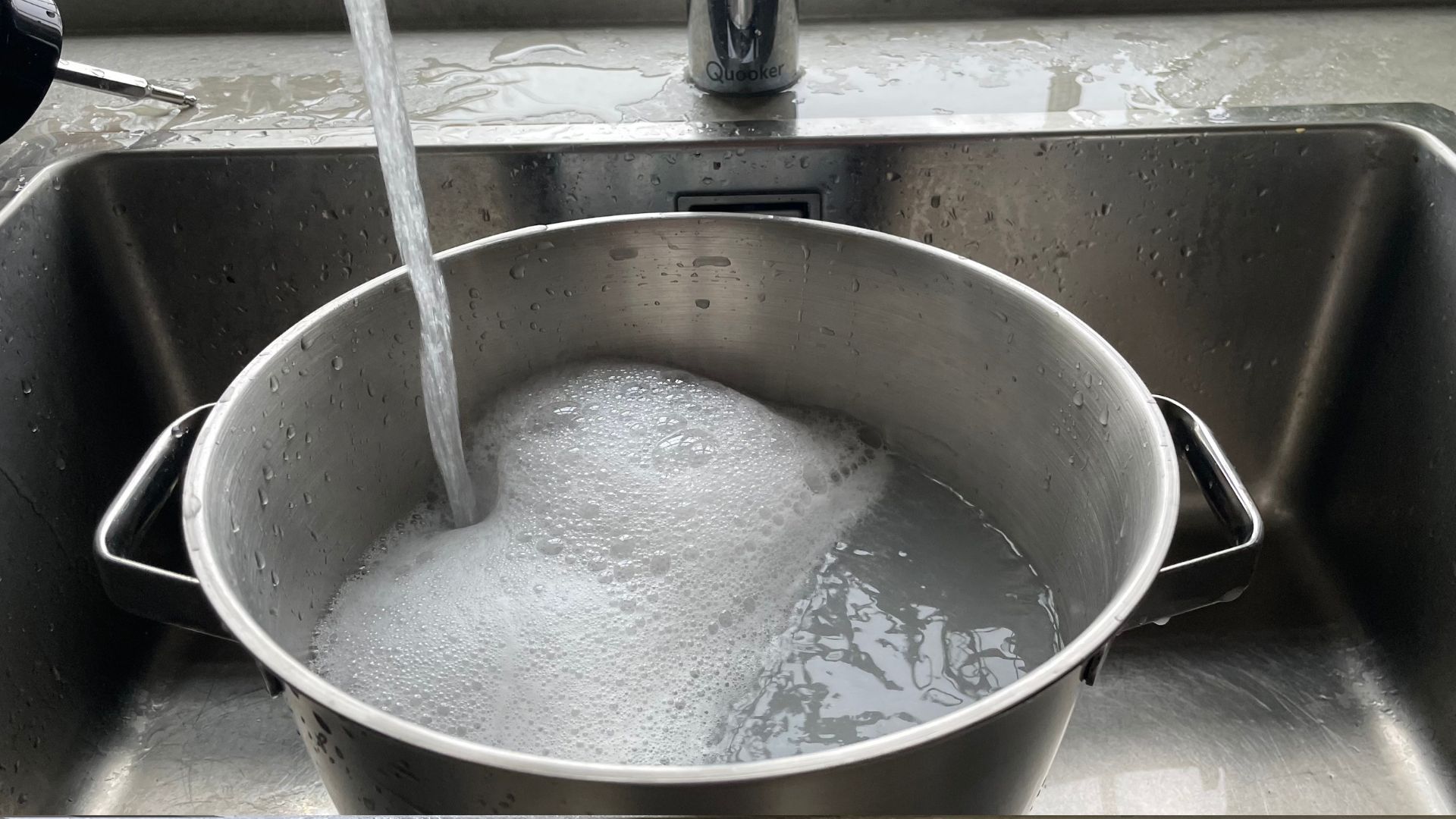
All of the parts of the Salter aren't dishwasher safe, so I’d recommend washing them by hand if you want them to last longer and stay looking smarter. I found that the finish on the bowl looked a little duller after a round in the wash, rather than its normal, sleek style. All my mixes slid off the attachments and even the whisk was pretty straightforward to clean between. The main body of the machine looked good, even after all the tests and generally doesn’t show up grease and fingerprints as much as stainless steel models will, which is great news for busy bakers.
How does it compare?
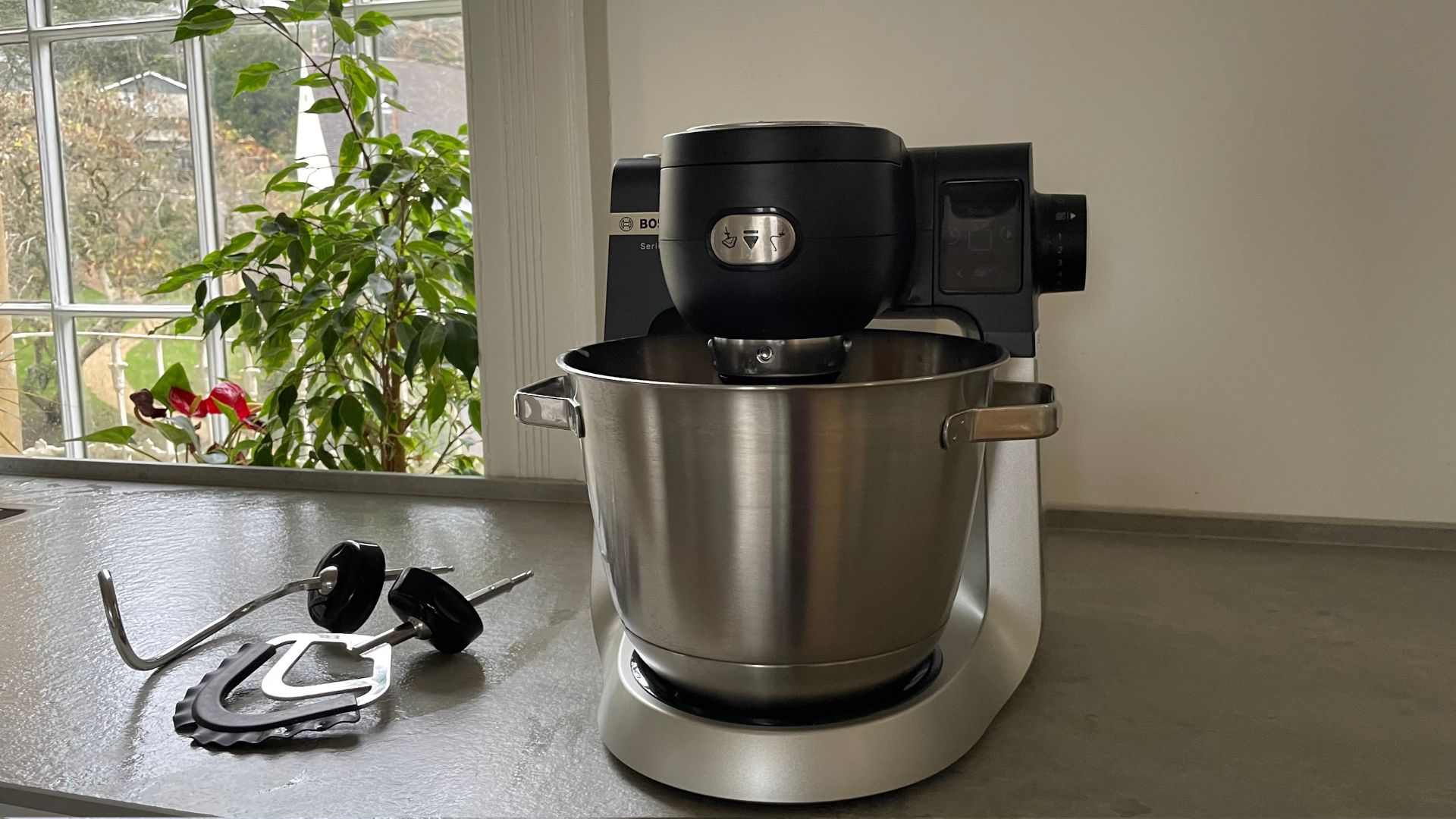
I was curious to see how this would compare to my 5-year-old KitchenAid, so that I could answer whether it’s worth spending another £400 om a stand mixer. Generally, I really liked the Salter’s aesthetic. It’s a little different from tht chunkier, retro styles that KitchenAid, Smeg, and Kenwood opt for, but I think that would suit a modern, minimalist kitchen. I also really liked that it was light and compact, so I could pack it away, which I wouldn’t do with the heavier models (it’s also a lot kinder to your wrists). Whilst the results from the Salter were good, it was notably louder, less powerful, and a little more flimsy. If you don’t mind the noise and you’re willing to scrape around the bowl to make sure that your miser doesn’t miss anything, you can enjoy the Salter and feel pretty smug about your savings. If not, there are models that are just a touch more expensive.
The Cuisinart Stand Mixer, for example, could be mistaken for a KitchenAid. It’s simple, classic, and robust. I’ve got bakers and product-testing colleages who prefer the Cuisinart and, I’m not surprised. It’s got the power to do some serious kneading, the style of a premium machine, and it’s only marginally more expenisve than a Salter.
Should you buy it?
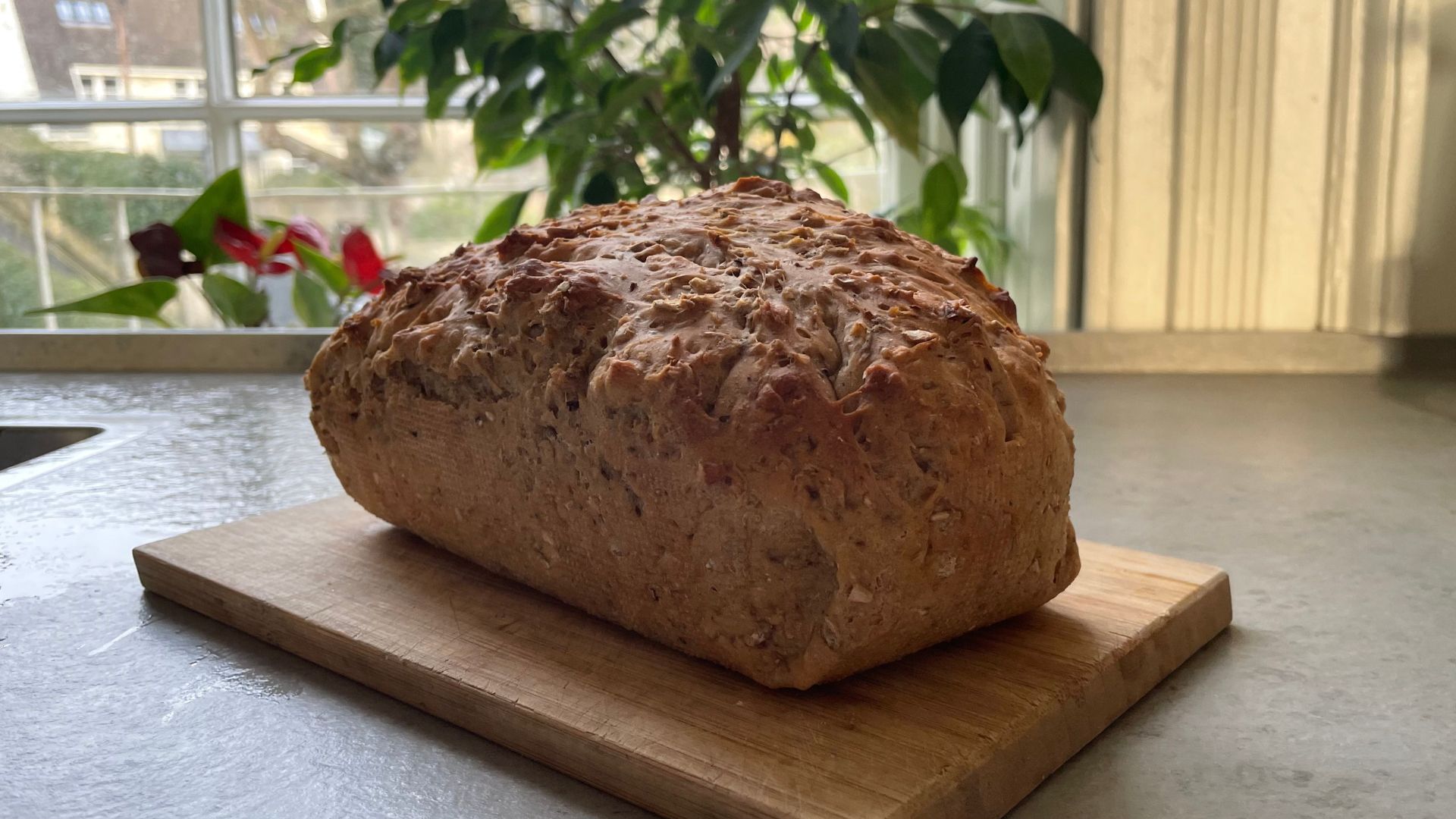
If you're a beginner and you're new to baking, this is a great entry-level stand mixer. It's incredible for the price - you won't get better value - but does feel a little flimsy in places, so don't bank on it to stand the test of time like a KitchenAid.
Sign up for the woman&home newsletter
Sign up to our free daily email for the latest royal and entertainment news, interesting opinion, expert advice on styling and beauty trends, and no-nonsense guides to the health and wellness questions you want answered.

Laura is woman&home's eCommerce editor, in charge of testing, reviewing and creating buying guides for the Homes section, so you'll usually see her testing everything from the best dehumidifiers to sizing up the latest Le Cruset pot. Previously, she was eCommerce editor at Homes & Gardens magazine, where she specialised in covering coffee and product content, looking for pieces tailored for timelessness. The secret to her heart is both simplicity and quality. She is also a qualified Master Perfumer and holds an English degree from Oxford University. Her first editorial job was as Fashion writer for The White Company.
-
 Sarah Jessica Parker just gave her skinny jeans a surprising spring update and the result has us reaching for this outfit combination
Sarah Jessica Parker just gave her skinny jeans a surprising spring update and the result has us reaching for this outfit combinationSarah Jessica Parker shows us how to update jeans to wear them throughout spring with one simple styling trick
By Rivkie Baum Published
-
 Princess Eugenie gives knitwear a spring makeover with short sleeved jumper and satin skirt at poignant London visit
Princess Eugenie gives knitwear a spring makeover with short sleeved jumper and satin skirt at poignant London visitPrincess Eugenie isn’t a working member of the Royal Family, but she’s a dedicated Patron of several vital charities and organisations.
By Emma Shacklock Published
-
 Ruth Langsford just gave us the green light to wear two watches - one for fitness, one for fashion
Ruth Langsford just gave us the green light to wear two watches - one for fitness, one for fashionIt might seem like you have to take a 'one or the other' approach, but this doesn’t have to be the case.
By Emma Shacklock Published